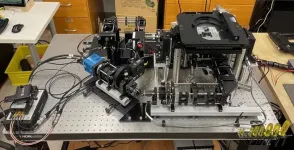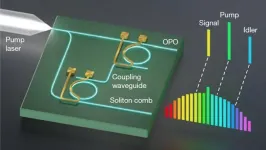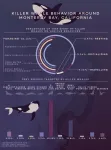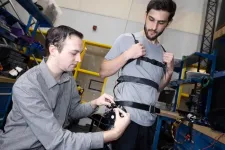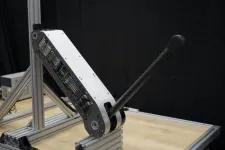(Press-News.org) Artificial intelligence can spot COVID-19 in lung ultrasound images much like facial recognition software can spot a face in a crowd, new research shows.
The findings boost AI-driven medical diagnostics and bring health care professionals closer to being able to quickly diagnose patients with COVID-19 and other pulmonary diseases with algorithms that comb through ultrasound images to identify signs of disease.
The findings, newly published in Communications Medicine, culminate an effort that started early in the pandemic when clinicians needed tools to rapidly assess legions of patients in overwhelmed emergency rooms.
“We developed this automated detection tool to help doctors in emergency settings with high caseloads of patients who need to be diagnosed quickly and accurately, such as in the earlier stages of the pandemic,” said senior author Muyinatu Bell, the John C. Malone Associate Professor of Electrical and Computer Engineering, Biomedical Engineering, and Computer Science at Johns Hopkins University. “Potentially, we want to have wireless devices that patients can use at home to monitor progression of COVID-19, too.”
The tool also holds potential for developing wearables that track such illnesses as congestive heart failure, which can lead to fluid overload in patients’ lungs, not unlike COVID-19, said co-author Tiffany Fong, an assistant professor of emergency medicine at Johns Hopkins Medicine.
“What we are doing here with AI tools is the next big frontier for point of care,” Fong said. “An ideal use case would be wearable ultrasound patches that monitor fluid buildup and let patients know when they need a medication adjustment or when they need to see a doctor.”
The AI analyzes ultrasound lung images to spot features known as B-lines, which appear as bright, vertical abnormalities and indicate inflammation in patients with pulmonary complications. It combines computer-generated images with real ultrasounds of patients — including some who sought care at Johns Hopkins.
“We had to model the physics of ultrasound and acoustic wave propagation well enough in order to get believable simulated images,” Bell said. “Then we had to take it a step further to train our computer models to use these simulated data to reliably interpret real scans from patients with affected lungs.”
Early in the pandemic, scientists struggled to use artificial intelligence to assess COVID-19 indicators in lung ultrasound images because of a lack of patient data and because they were only beginning to understand how the disease manifests in the body, Bell said.
Her team developed software that can learn from a mix of real and simulated data and then discern abnormalities in ultrasound scans that indicate a person has contracted COVID-19. The tool is a deep neural network, a type of AI designed to behave like the interconnected neurons that enable the brain to recognize patterns, understand speech, and achieve other complex tasks.
“Early in the pandemic, we didn’t have enough ultrasound images of COVID-19 patients to develop and test our algorithms, and as a result our deep neural networks never reached peak performance,” said first author Lingyi Zhao, who developed the software while a postdoctoral fellow in Bell’s lab and is now working at Novateur Research Solutions. “Now, we are proving that with computer-generated datasets we still can achieve a high degree of accuracy in evaluating and detecting these COVID-19 features.”
The team’s code and data are publicly available here.
END
AI can now detect COVID-19 in lung ultrasound images
2024-03-20
ELSE PRESS RELEASES FROM THIS DATE:
Is the burden of neurologic disease higher after influenza or COVID-19?
2024-03-20
EMBARGOED FOR RELEASE UNTIL 4 P.M. ET, WEDNESDAY, MARCH 20, 2024
MINNEAPOLIS – People who have an influenza infection are more likely to need medical care for neurologic disorders within the next year than people who have a COVID-19 infection, according to a study published in the March 20, 2024, online issue of Neurology®, the medical journal of the American Academy of Neurology. The study, funded by the American Academy of Neurology, looked at people who were hospitalized with either influenza or COVID-19. The study did not look specifically at outcomes ...
Scientists find one of the most ancient stars that formed in another galaxy
2024-03-20
The first generation of stars transformed the universe. Inside their cores, simple hydrogen and helium fused into a rainbow of elements. When these stars died, they exploded and sent these new elements across the universe. The iron running in your veins and the calcium in your teeth and the sodium powering your thoughts were all born in the heart of a long-dead star.
No one has been able to find one of those first generation of stars, but scientists have announced a unique finding: a star from the second generation that originally formed in a different galaxy from ours.
“This ...
Researchers add swept illumination to open-top light-sheet microscope
2024-03-20
Researchers have incorporated a swept illumination source into an open-top light-sheet microscope to enable improved optical sectioning over a larger area of view. The advance makes the technique more practical for nondestructive 3D pathology.
3D pathology is being explored as an alternative to traditional slide-based histology because it can provide detailed 3D insights into pathological structures and cellular interactions without altering the tissue. This approach makes it possible to analyze complex 3D tissue structures and to image thick tissues, which is not possible with slide-based methods.
The researchers used their improved open-top ...
High-quality microwave signals generated from tiny photonic chip
2024-03-20
In a new Nature study, Columbia Engineering researchers have built a photonic chip that is able to produce high-quality, ultra-low-noise microwave signals using only a single laser. The compact device — a chip so small, it could fit on a sharp pencil point — results in the lowest microwave noise ever observed in an integrated photonics platform.
The achievement provides a promising pathway towards small-footprint ultra-low-noise microwave generation for applications such as high-speed communication, atomic clocks, and autonomous vehicles.
The challenge
Electronic devices for global navigation, wireless communications, radar, and ...
OFC 2024 brings innovations from leading global organizations and cutting-edge tech demonstrations to California
2024-03-20
SAN DIEGO—A wave of innovation is hitting California as the Optical Fiber Communications Conference and Exhibition (OFC) gears up to showcase the latest breakthroughs in optical communications and networking.
OFC will take place at the San Diego Convention Center from 24 to 28 March 2024 drawing industry leaders, experts, academia, media, analysts and students from around the world to explore the latest in optical technology.
Innovative advancements in industrial technologies, as well as research in 800ZR, Coherent PON, Linear Pluggable Optics (LPO), multicore fiber, AI and ...
Killer whales use specialized hunting techniques to catch marine mammals in the open ocean
2024-03-20
Killer whales foraging in deep submarine canyons off the coast of California represent a distinct subpopulation that uses specialized hunting techniques to catch marine mammals, Josh McInnes at the University of British Columbia and colleagues report March 20 in the open-access journal PLOS ONE.
Killer whales (Orcinus orca) are found in oceans around the world, but they form separate populations, or ‘ecotypes’, that have their own social structure, food preferences and hunting behaviors. One ecotype, known as transient killer whales, specialize in hunting marine ...
The first Neolithic boats in the Mediterranean
2024-03-20
More than 7,000 years ago, people navigated the Mediterranean Sea using technologically sophisticated boats, according to a study published March 20, 2024 in the open-access journal PLOS ONE by Juan F. Gibaja of the Spanish National Research Council, Barcelona and colleagues.
Many of the most important civilizations in Europe originated on the shores of the Mediterranean Sea. During the Neolithic, communities clearly traveled and traded across the water, as evidenced by watercraft in the archeological record and the presence ...
Universal controller could push robotic prostheses, exoskeletons into real-world use
2024-03-20
Robotic exoskeletons designed to help humans with walking or physically demanding work have been the stuff of sci-fi lore for decades. Remember Ellen Ripley in that Power Loader in Alien? Or the crazy mobile platform George McFly wore in 2015 in Back to the Future, Part II because he threw his back out?
Researchers are working on real-life robotic assistance that could protect workers from painful injuries and help stroke patients regain their mobility. So far, they have required extensive calibration and context-specific tuning, which keeps them largely limited to research labs.
Mechanical engineers at Georgia Tech ...
Autism acceptance varies across countries – where should we target support?
2024-03-20
Societal acceptance of autism varies considerably across different countries, with lowest levels of acceptance found in Japan and Belgium, new research shows.
A survey of 306 autistic individuals from eight countries revealed that around three quarters of respondents do not feel accepted, or only sometimes feel accepted, as an autistic person. Among these countries, participants in Japan and Belgium reported the lowest levels of acceptance, while those in Canada, the UK, and South Africa reported comparatively higher levels.
The study, published in PLOS ONE, is the ...
A replacement for traditional motors could enhance next-gen robots
2024-03-20
Whether it’s a powered prosthesis to assist a person who has lost a limb or an independent robot navigating the outside world, we are asking machines to perform increasingly complex, dynamic tasks. But the standard electric motor was designed for steady, ongoing activities like running a compressor or spinning a conveyor belt – even updated designs waste a lot of energy when making more complicated movements.
Researchers at Stanford University have invented a way to augment electric motors to make them much more efficient at performing dynamic ...
